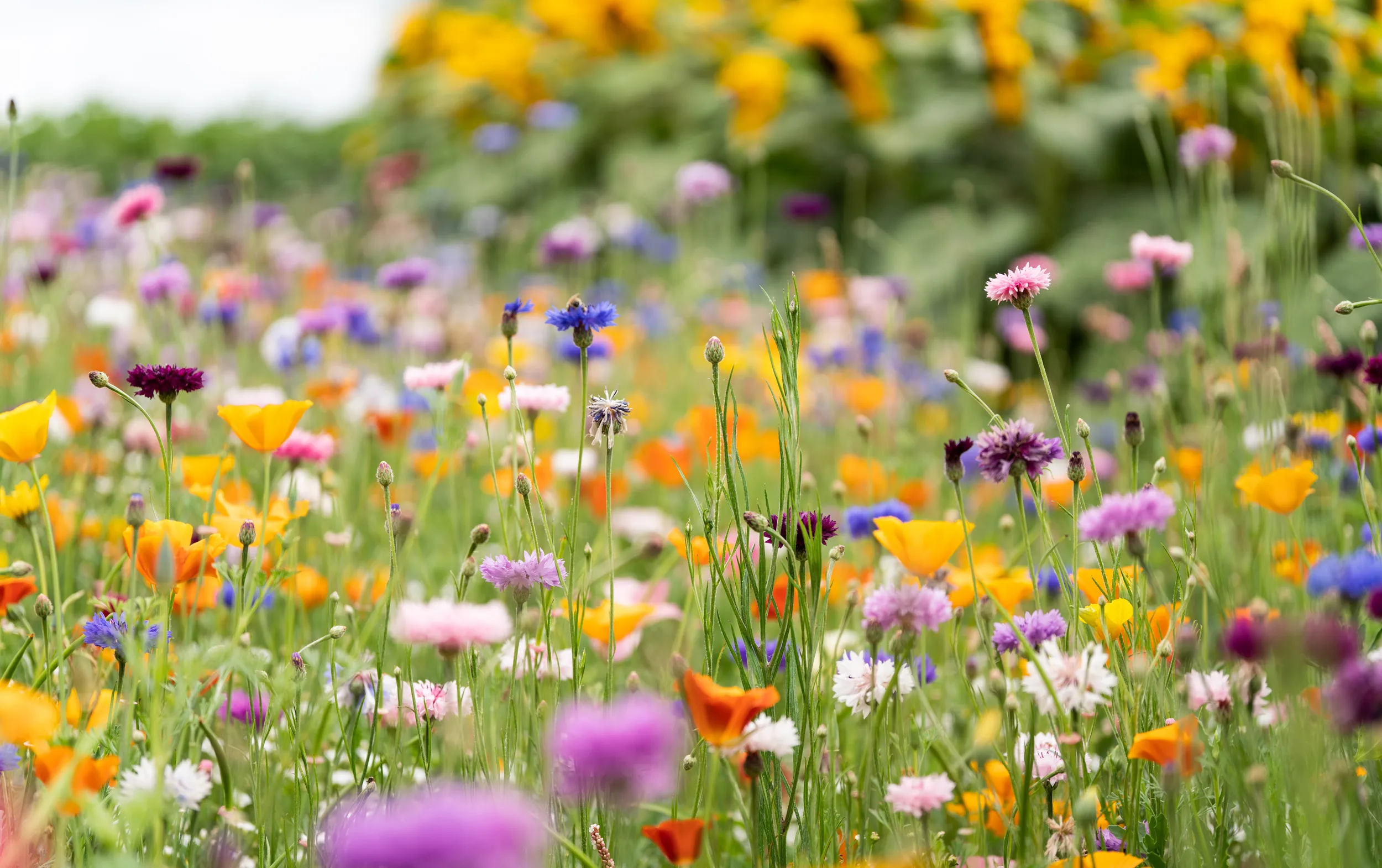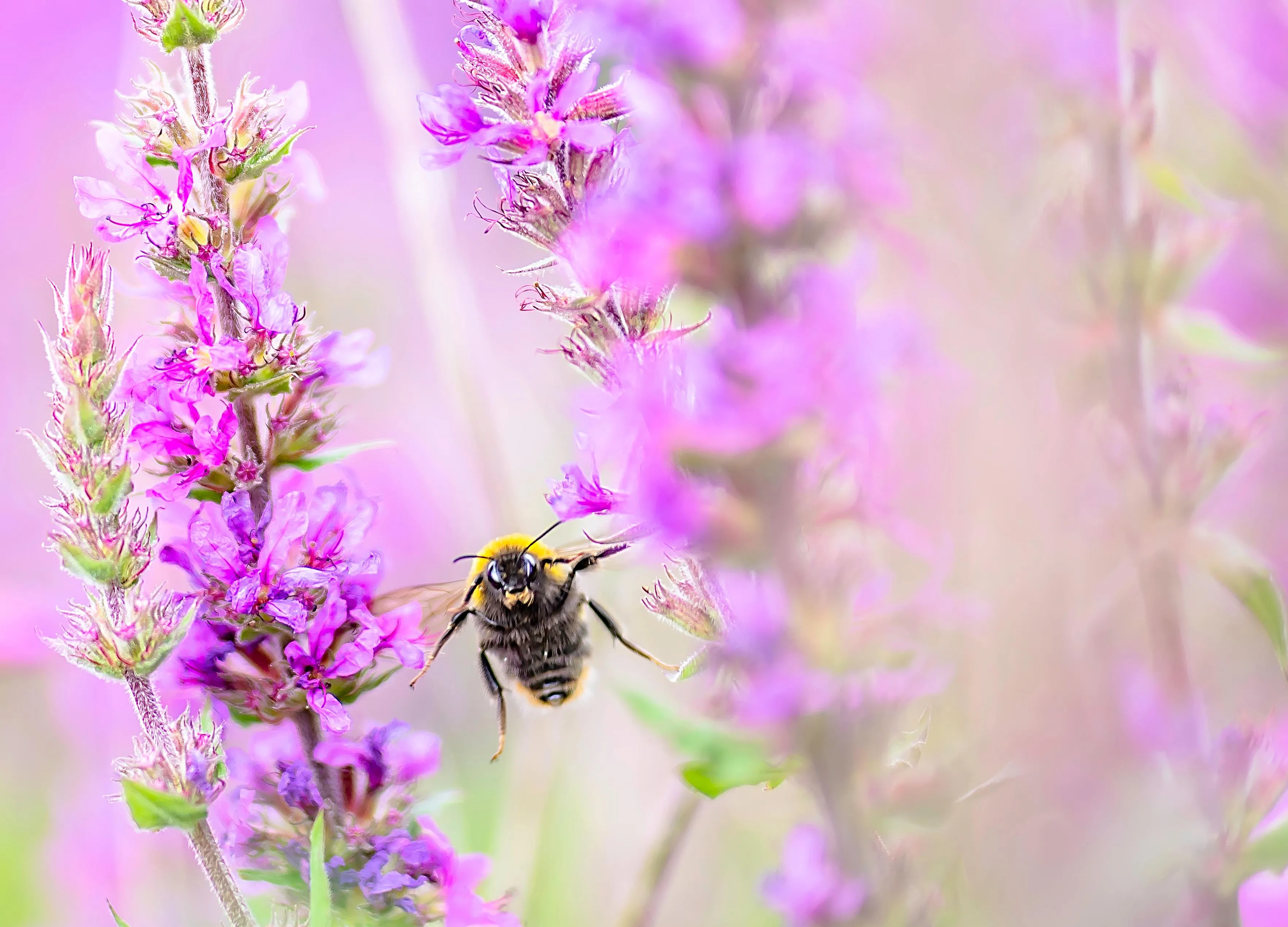Farm with flower power
Here’s a stat – more than 70% of the UK is farmland. We need this land for food but so does much of our declining wildlife. The good news is more and more farmers are proving you can do both...with some turning to the power of flowers.
.jpg)
On this page
Farm with flower power
Right now, our food and farming system is destroying the very nature it relies on. This can’t continue, but there is an answer – nature-friendly farming – and many farmers and food producers are already shifting to it. But changing the whole farming system to be nature-friendly will need all of us.
A huge opportunity
Three-quarters of the UK is dedicated to farmland. That is a lot of land – roughly an area six times the size of Belgium. Imagine if a few small nature friendly changes were made to this land and it could still produce enough food for us, while returning a profit to farmers. It sounds too good to be true, but farmers across the UK are already doing just that.
Squeezing out nature
Much of the problems facing nature on our farmland have been caused by policies designed to make farming more efficient. But in concentrating on the bottom line, our food and farming system is destroying the very nature it relies on. Soils are being depleted, water courses degraded and beneficial pollinators and pest controllers are disappearing. In short, nature is struggling to cope with the pace of change.
The places our farmland wildlife needs to survive, such as hedgerows and rough field edges crammed with wildflowers, have become so fragmented that the small legs and wings of many species just can’t travel the distances to find them. This squeezing out of nature has led to declines in over 600 farmland species over the last 50 years.
Network of nature savers
Many farmers are already fighting back for nature, including those in the Nature Friendly Farming Network (NFFN). This is a group of farmers who are passionate about producing great food while letting nature thrive on their land. Every day, every season, they’re demonstrating to decision makers and everyone else that it is possible to farm for nature, the environment and the planet while still producing plentiful food.

Walking the walk
We’re listening and learning from the NFFN, other farmers, scientists and experts every day to find out more about producing food in a nature friendly way. On Hope Farm in Cambridgeshire, we set about testing ideas in a controlled way so we can scientifically evaluate how much benefit they could potentially bring. So far, tests have included experimenting with crop rotations, increasing the size and length of hedges, improving soils and cutting out insecticides.
With 20 years of data to back it up, we know that these changes have had a dramatic impact on wildlife on the farm. Farmland birds skyrocketed 1,287% between 2002 to 2019. Butterfly numbers have quadrupled and bumblebee numbers are nineteen times higher than on a nearby control farm. All while maintaining a steady profit.

Flower show
One of the latest experiments is planting wildflower strips and alleys of trees within fields. Research has already shown that planting wildflower strips helps bring beneficial insects into the fields, which is good for pollination and pest control. But this ten-year trial hopes to show the strips with trees can help in other ways too, such as:
- A wildlife boom – from earthworms underground to the birds in the treetops to everything in between, we hope the strips will increase beneficial wildlife including beneficial pollinators and natural pest controllers. The trial will also look to see if the trees have a negative impact on any species.
- Carbon catching trees - we know trees store carbon – but we want to find out accurate figures for how much carbon our trees can capture to help inform future work.
- Make some money – apple and cobnut trees within the alleys can provide another source of income. We’ll be keeping a close eye on whether these trees bring home the bucks as well as the bugs.
Bring home the flower power
Wildflowers are great on farmland, but they're also brilliant for wildlife pretty much anywhere you plant them which isn’t too shady. Autumn is the best time to sow wildflower seeds, so if you have space, why not give it a go. Here’s our guide to creating a wildflower meadow.